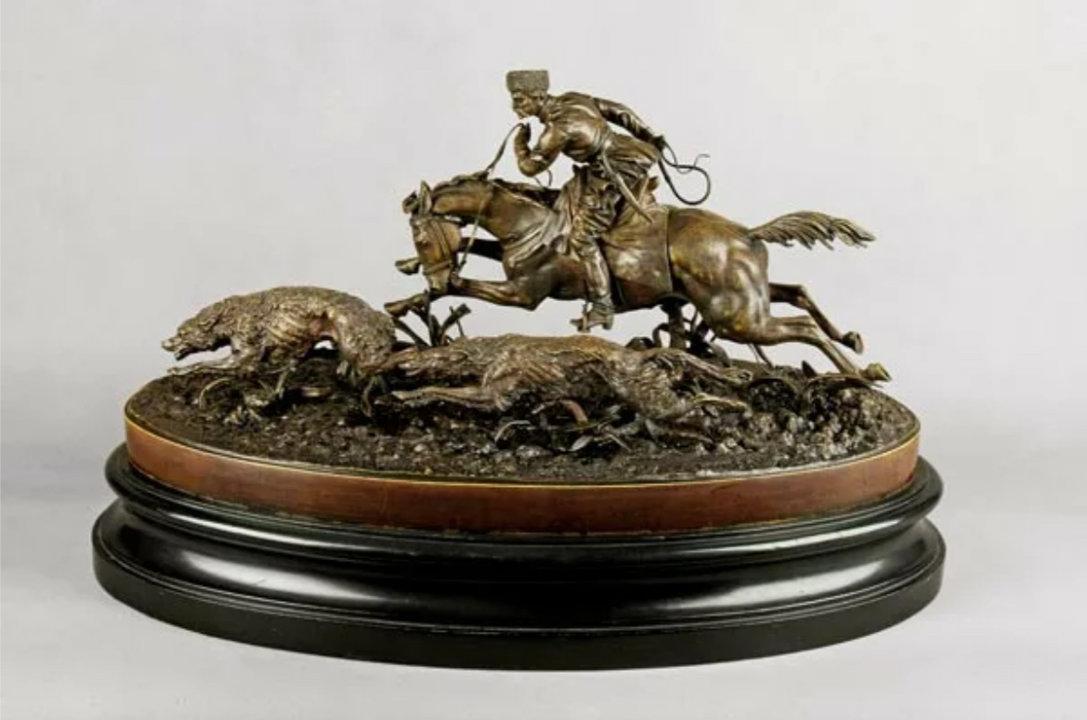Post
Lower Ranks of the Bear-Hunting Detachment of the Life-Guards Izmailovsky Regiment.
No. 45. Postcard from the series "The Russian Army." 1910s. Size: 14 × 9 cm. Military hunting detachments were introduced into the Russian Imperial Army in 1886. These units consisted of “hunters”—volunteers selected from among the bravest and most capable soldiers for special assignments, primarily reconnaissance. In essence, they were military scouts. During peacetime, infantry “hunters” honed their physical fitness and marksmanship through organized hunts for predatory animals. From 1904 onward, all such “hunters” were officially designated as scouts. In the Imperial Russian Army, hunting during peacetime served not merely as recreation but as a vital form of military training. Starting in the late 19th century, specially selected units—often called “hunters” (*okhotniki*)—were organized within elite regiments, including the Guards. These soldiers were chosen for their physical endurance, marksmanship, fieldcraft, and courage. Officially established in 1886, military hunting detachments were tasked with reconnaissance and special operations in wartime. To maintain and sharpen their combat readiness during periods of peace, they participated in organized hunts, particularly targeting large and dangerous game such as bears and wolves. These expeditions demanded stealth, precision shooting, quick decision-making, and the ability to operate effectively in harsh, remote terrain—skills directly transferable to battlefield reconnaissance and skirmishing. Hunting thus became a practical and sanctioned method of advanced military training. It developed soldiers’ stamina, honed their observational abilities, improved their shooting accuracy under pressure, and fostered unit cohesion. By 1904, reflecting their evolving role, these “hunters” were formally redesignated as scouts (*razvedchiki*), underscoring the military purpose behind what might otherwise appear as a noble pastime. In the autumn of 1892, a military hunting detachment from the Life-Guards Izmailovsky Regiment arrived in Pudozh District for a bear hunt. Under the command of Lieutenant S. Nastchokin, a team of twelve enlisted men traveled by steamboat from St. Petersburg to Shala, then marched fifteen versts on foot to the village of Vorobyovskaya on Lake Kupetskoye, where they stayed for about a month. This was already the third expedition by the Izmailovsky Regiment into the Olonets Governorate. On their first trip, the regiment’s hunters killed four bears; on the second, they killed twelve.
Roman Doronin
No comments yet
See other news Hunting History

Wolf Hunting with a Borzoi (Wolf Baiting) Nikolai Ivanovich Liberikh (1828–1883) Late 1880s 53.5 × 25 × 27 cm Bronze, casting, embossing, patination Foundry: "S.
22 October 22:31

Hunting license issued in 1907 to a peasant from the Dvinsky district of the Russian Empire. Allows the owner to have one hunting rifle.
21 October 0:27

King Alfonso XIII was not only a constitutional monarch but also an enthusiastic and accomplished sportsman, for whom hunting was both a cherished pastime and a strategic
19 October 10:38

Edward VIII and Duck Netting at Hama-rikyū Gardens, Japan 1922 The photograph from 1922 shows a rare and evocative scene: the future King Edward VIII—then the Prince of
18 October 21:55

The photograph “Canning Black Caviar from Sturgeon Caught in the Volga River, Astrakhan, USSR, 1963” by renowned Soviet photojournalist Valery Shustov is far more than a
18 October 1:15
UH.APP — Social media network and application for hunters